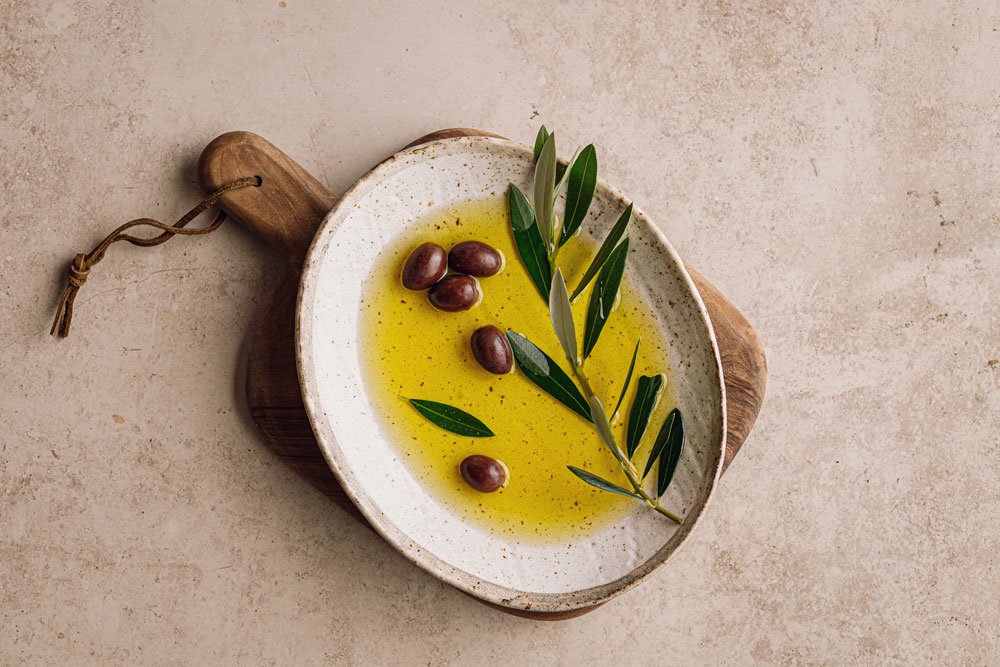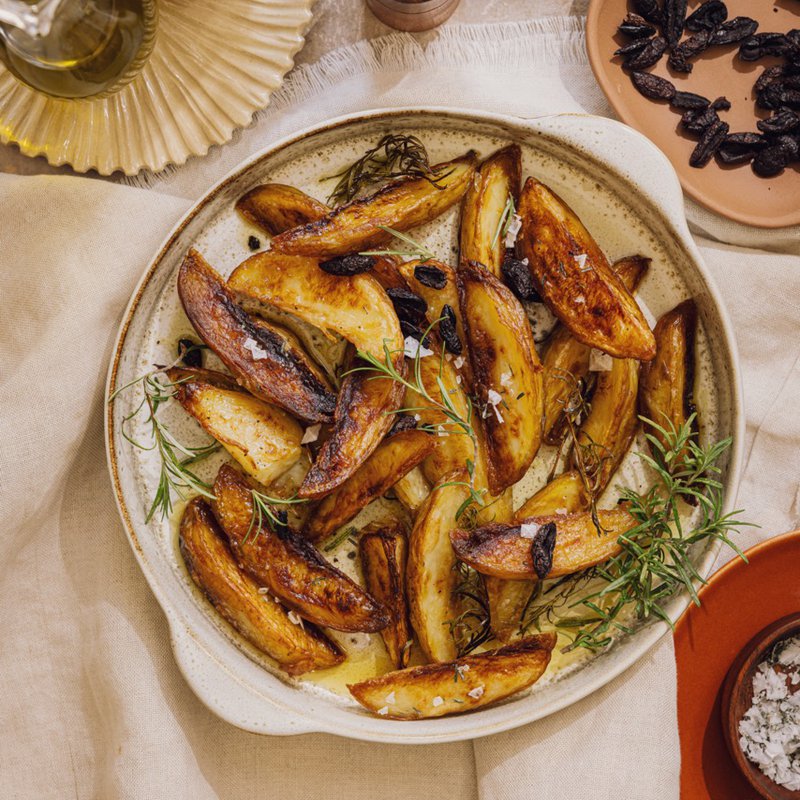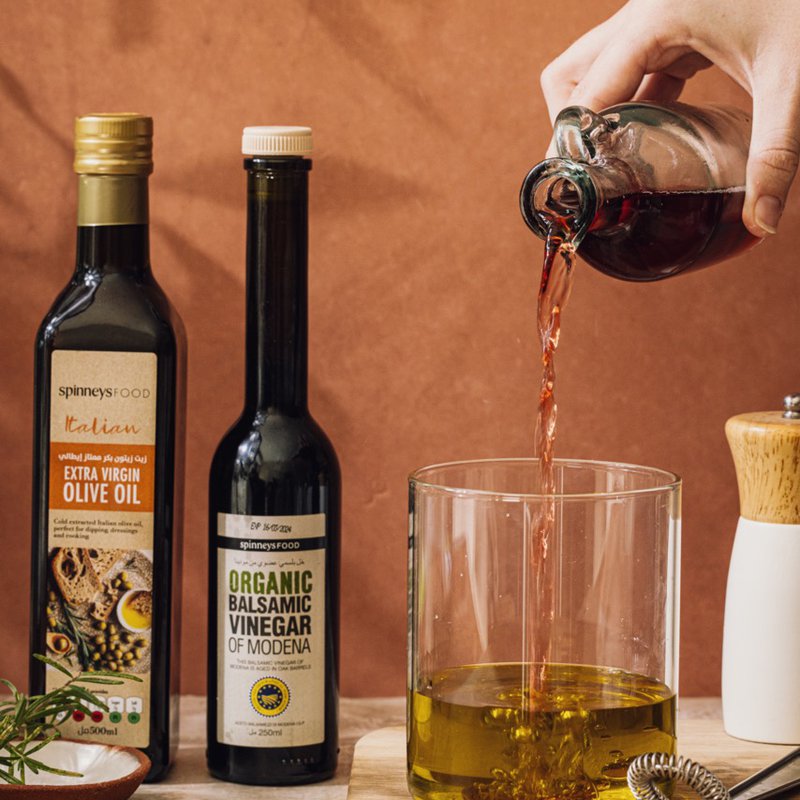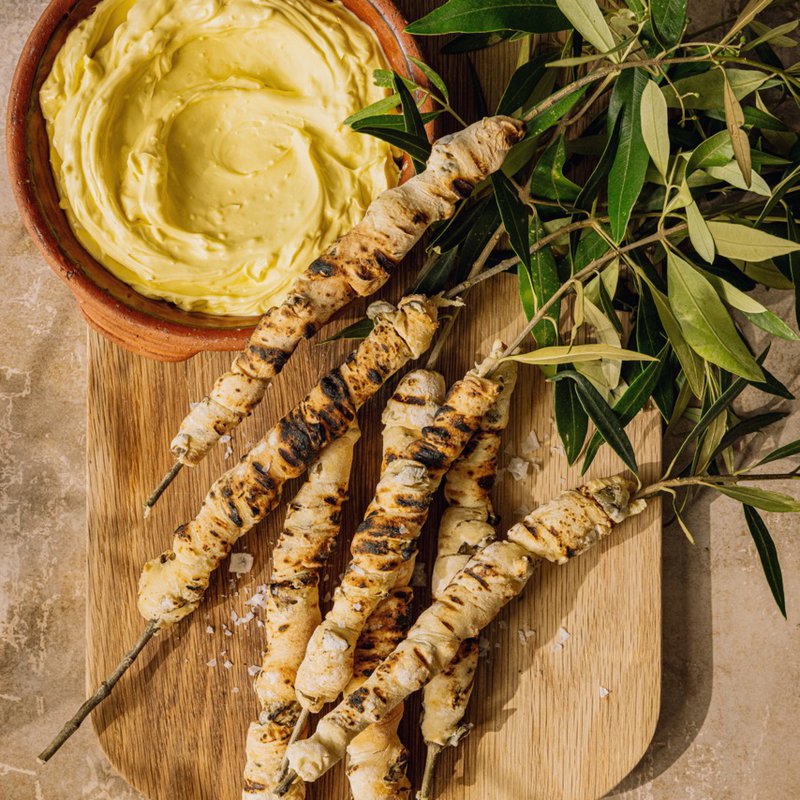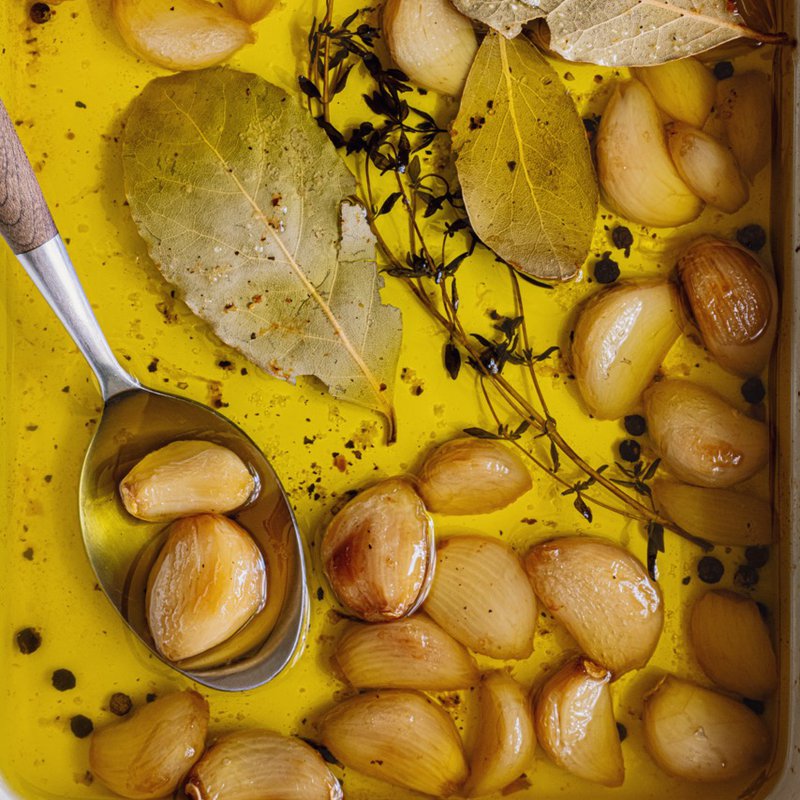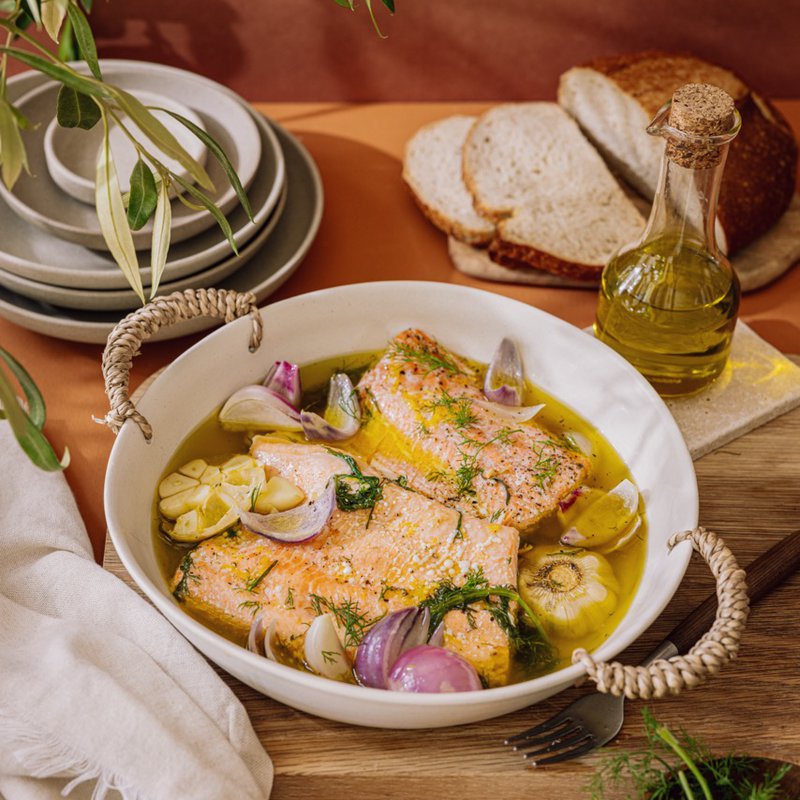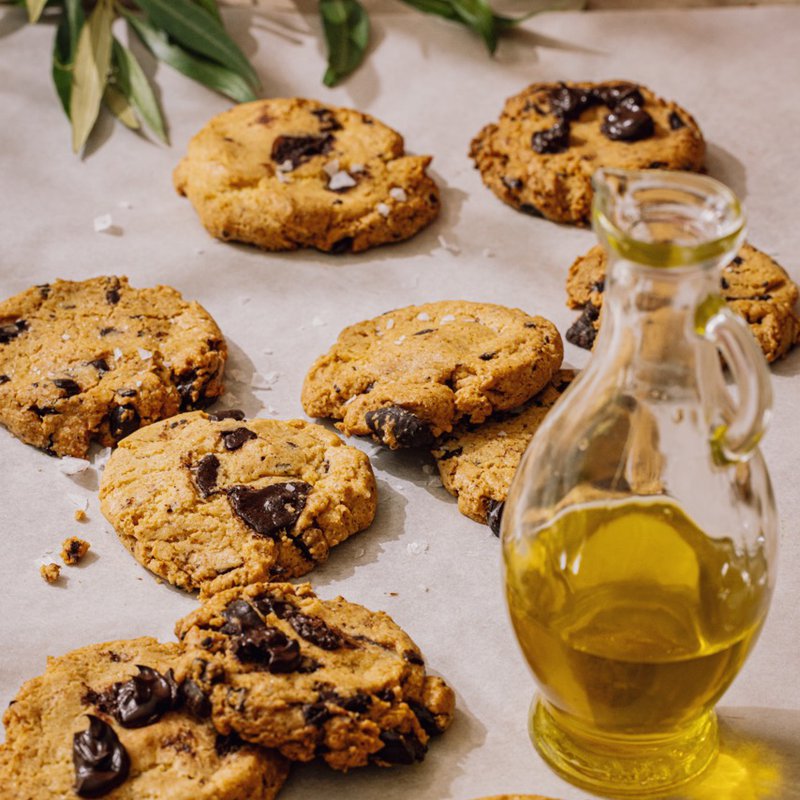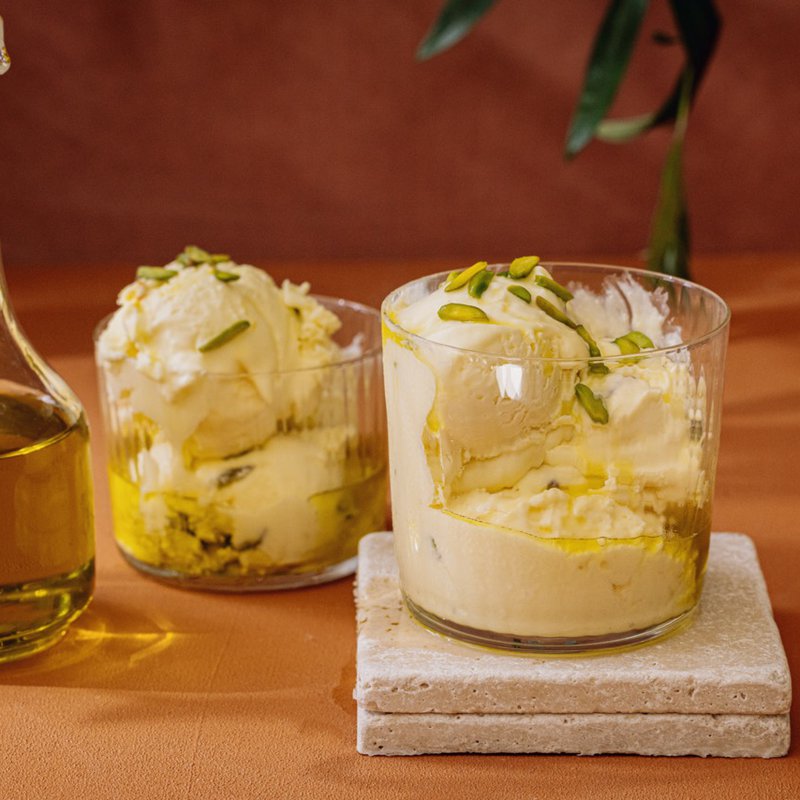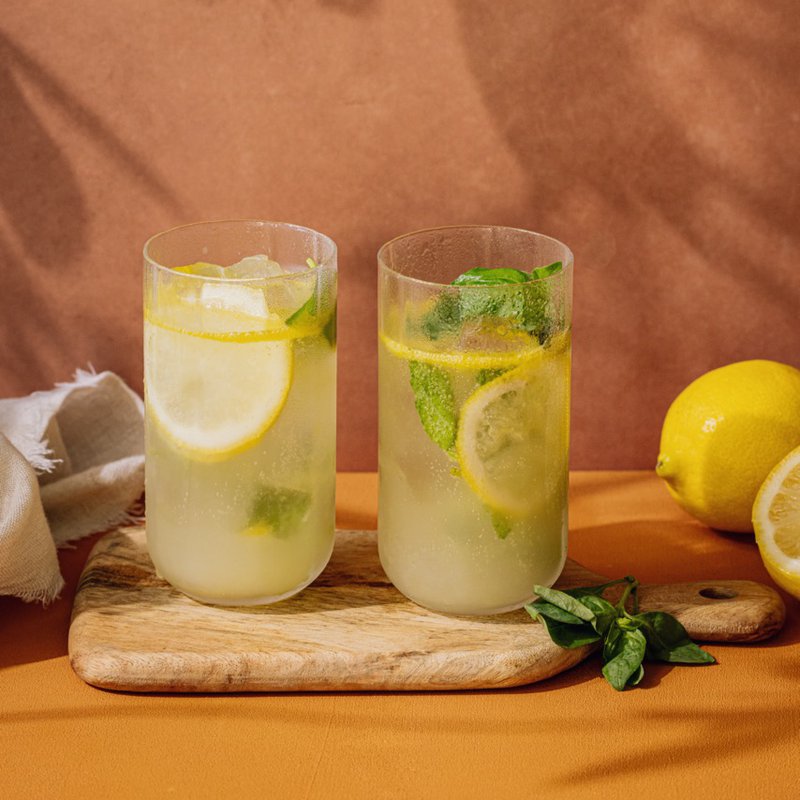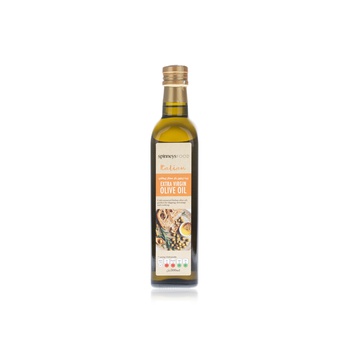KNOW YOUR OILS
For such a pure and simple product, olive oil is subject to many variations and specifics. So, for the discerning customer, it’s a good idea to learn the watchwords on the bottle…
Pomace
This is oil drawn from leftover pulp and pits after the olives are first pressed. Heat and solvents used in refining make for a milder-tasting product that is technically lower-quality than extra virgin but better suited to high-temperature frying and baking.
Regular/Pure olive oil
Don’t be fooled that ‘pure’ means ‘better’ – the contents are usually blended from virgin and refined oils. Again the quality is lower and the flavour milder, even neutral, so ‘regular’ is the more apt descriptor for an oil that’s just okay for cooking.
Virgin
Now you’re getting to the good stuff: this is unrefined oil that maintains the original flavour of the olive. Produced to slightly looser standards than its extra virgin cousin, with a higher quantity of oleic acid, it’s actually quite rare to see this sold in stores.
Extra virgin olive oil (EVOO)
This is as pure as olive oil gets, produced to the highest standards under strictest regulations. EVOO certification means no chemicals, no heat, no refinement and ultimately no defects, so this olive oil is optimal for consumption straight from the bottle.
Cold pressed
In technical terms this refers to olive oil that is kept below 28°C during the extraction process, thereby preserving the flavour and fragrance of the olive. It used to be a meaningful distinction back when later pressings were heated, but in modern practice all extra virgin olive oils are effectively produced ‘cold’.
Filtered vs Unfiltered
Tastes tend to diverge on these: cloudier ‘unfiltered’ olive oil is often claimed to be ‘purer’, or closer to nature in the raw. Sediment makes it a little volatile and shortens the shelf life, so some prefer the cleaner, clearer and longer-lasting ‘filtered’ product.
Stay away from ‘light’ oil
Like ‘pure’, the word ‘light’ can be misleading. The product in your hand is still 100 per cent fat and invariably quite bland, its flavour and aroma having been blanched out by heat and chemicals.

YOUTH AND BEAUTY
Olive oil is not like wine, and does not improve with age. The better the oil the shorter the shelf-life, in fact, and EVOO will degrade pretty quick. For optimal flavour, keep for no more than two years before opening, and two months after.
High maintenance
Vulnerable, volatile, a little precious... a good olive oil needs protection from heat and light in particular. Store in dark glass and dry cupboards, and keep the lid tightly sealed to avoid oxygen exposure. Room temperature is ok, but 14°C is optimal.
FRY
There are better seed oils for most frying purposes, with higher smoke points and subtler flavours. But regular or ‘light’ olive oils can add their own mild flourish to fried dishes with smoke points around 240°C – substantially lower than EVOO, which is best kept for uncooked foods or finishing touches.
DRESS
If you have tasted olive oil with balsamic vinegar – the two staying separate in the bowl but conjoining on the palate, like an edible yin-yang – then you already know it makes a perfect base for emulsions. High-quality EVOO is the perfect primer for dressings, too.
Storage
Transfer your dressing to a jar with a tight-fitting lid and store for up to 2 weeks in the refrigerator. Shake well before each use.
Ratios to remember
Experiment with these ratios and adjust them according to your taste preferences. Remember, the key to a good dressing is balance, so taste as you go and make it your own.

WHIP & DIP
Award-winning chefs such as Seamus Mullen have lately popularised whipped olive oil as a sweet or savoury game-changer. Use a handheld mixer to beat fruity oil into powdered sugar and heavy cream; whisk with butter and salt for a soft spread, or with garlic and herbs to make a great dip.
POACH
Another time-honoured French technique for cooking meat or seafood in light liquid – traditionally a broth – poaching also lends itself well to olive oil. An EVOO will penetrate deeply into a rich-flavoured, firm-textured fish such as salmon or tuna for a lovely velvety finish.
CONFIT
Confit usually means cooking fowl in its own fat, but olive oil makes a fine substitute. Slow-roast root vegetables in a deep bath of oil and you’ve got yourself a superb meatless confit.
BAKE
More and more chefs have taken to using olive oil in baking. Where an emulsion such as butter can add a certain density to breads and cakes, olive oil brings softness and moisture by way of 100 per cent fat. It may seem an odd ingredient for our cookie recipe below, but it makes sense if you think of olive oil as essentially fruit juice, mixing beautifully with dark chocolate and sea salt.
FREEZE
Olive oil complements ice cream with a wholly different kind of fat – spicy viscosity melding with rich, sweet dairy. You can parlay that flavour into sorbet too, where a frozen blend of olive oil with lemon zest, egg whites and water makes a fine summer dessert.
SIP
The health-giving properties of olive oil have made it a kind of tonic for some, who drink small quantities daily to help regulate digestion, boost the their immune system, or nourish skin and hair. The bigger trend, however, is to add olive oil into mixed drinks for enhanced flavour and texture.
Time to cook
Show off your skills with these olive oil recipes that highlight each technique
TREND ALERT
EVOlution, Oliveto, Alligator Alley … these are just some of the cocktails invented or inspired by the New York bartenders who started mixing drinks with olive oil a few years ago. Some of the world’s best bars will sometimes infuse spirits with the oil before serving, adding drops onto the surface of the drink for an aesthetic-dramatic effect, or even blending some in the shaker. But the upshot is usually an added richness and fruitiness in the flavour, and an extra-velvety mouthfeel. Some of the most striking olive oil cocktails add further intensity by way of pickle brine, cucumber, or aromatic bitters, which enhance, not dominate the flavour profile of the cocktail.
Did you know?
Major growing nations such as Italy and Spain are home to olive oil schools that train and certify sommeliers. As with their counterparts in the wine industry, these professionals can identify oils by their fragrances and flavour profiles, and make food pairing recommendations – they’re now very much in demand at high-end restaurants, delis and production facilities.
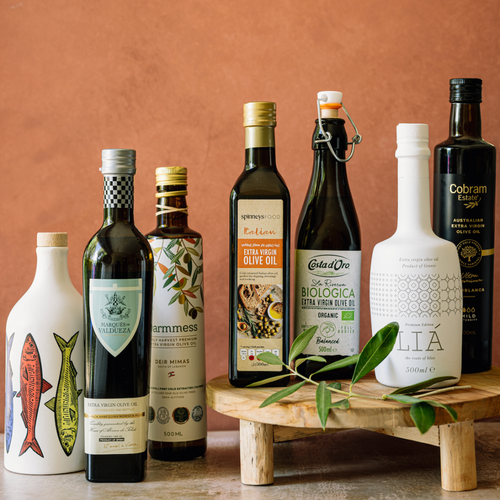
Find One You Love
Personal taste, and the requirements of a given recipe, will dictate which olive oil you want to use for cooking and finishing, so take some time to consider compatible flavours…
Pungent and Peppery
If you’re cooking fatty meats, deep greens or deeply flavoured Mediterranean dishes, you want a spicier oil that holds up to bolder flavours. Drop into heavy stews and drizzle over strong cheeses for an added pungency and complex notes of chocolate or black pepper.
Grassy and Fruity
Grassier oils tend to enhance chicken dishes but are also the best bet for dessert – drizzled over fresh fruit, chocolate, or ice cream. Their comparative lightness and mildness makes them easily adaptable to marinades, salad dressings, roast veg and grilled meats.
Fruity and spicy
Oils labelled ‘balanced’ or ‘medium’ will smoothly split the difference between fruit and spice, often adding hints of nuts or herbs without hitting the peppery notes that can overwhelm a more delicate dish.
